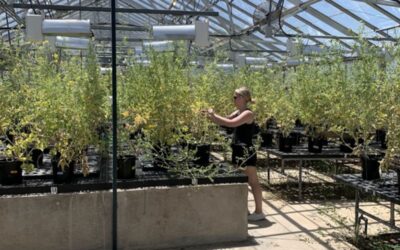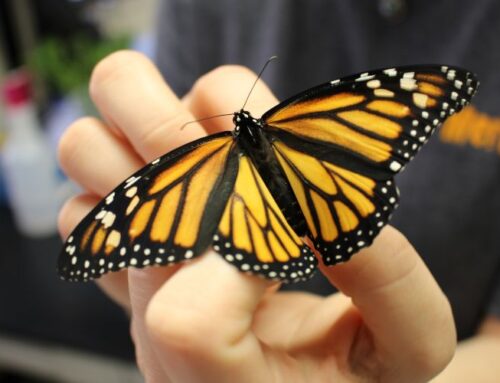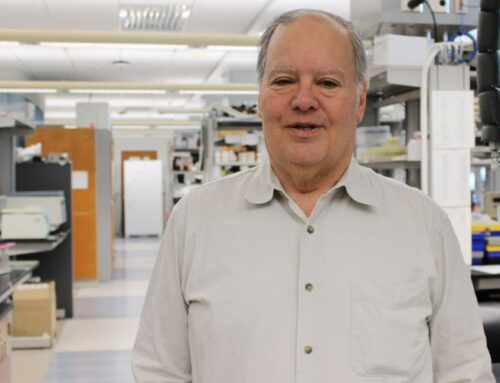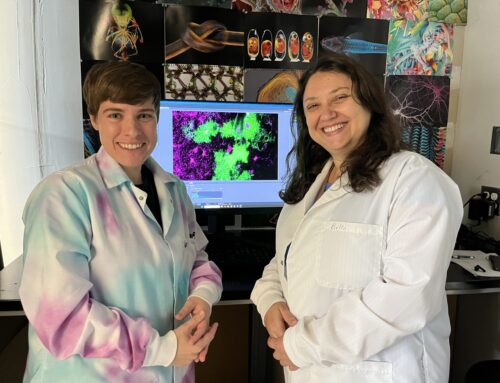Groundbreaking Study Recognized by Prestigious Award Highlights Critical Role of Epistasis in Evolution
By: Heath Blackmon
 A groundbreaking research paper by Dr. Jorja Burch and colleagues, recently published in the journal Evolution, has received the prestigious 2025 Presidents’ Award from the Society for the Study of Evolution. This accolade recognizes the paper as one of the most outstanding Ph.D. dissertation papers published in evolutionary biology journals over the past year.
A groundbreaking research paper by Dr. Jorja Burch and colleagues, recently published in the journal Evolution, has received the prestigious 2025 Presidents’ Award from the Society for the Study of Evolution. This accolade recognizes the paper as one of the most outstanding Ph.D. dissertation papers published in evolutionary biology journals over the past year.
The paper, titled “Wright was right: leveraging old data and new methods to illustrate the critical role of epistasis in genetics and evolution,” resolves a long-standing debate within evolutionary biology by providing compelling empirical evidence for the widespread importance of epistasis-a phenomenon where the effect of a genetic mutation depends on interactions with other genes-in evolutionary processes.
For decades, scientists have debated the relative roles of different genetic mechanisms, particularly additive effects versus epistasis, in driving evolutionary changes. While much theoretical research has highlighted the potential importance of epistasis, empirical evidence spanning diverse species and traits has been limited. Dr. Burch’s study dramatically addresses this gap, bringing together an unprecedented dataset containing over 1,600 genetic studies across hundreds of different species, ranging from domesticated dogs and corn to fruit flies and flour beetles.
Dr. Heath Blackmon, co-author and advisor to Dr. Burch, noted, “Jorja’s work demonstrates clearly and unequivocally that epistasis is not merely a rare or niche phenomenon. Instead, it is a fundamental and pervasive characteristic of genetic variation across the entire tree of life and across virtually all trait types. Her comprehensive dataset finally provides the empirical evidence necessary to settle a debate that has been primarily theoretical for nearly a century.”
This extensive data compilation enabled Dr. Burch and colleagues to conclusively show that traits closely associated with organismal fitness, such as reproductive success and survival, rely more heavily on epistatic interactions than previously recognized. Moreover, the study found striking differences in genetic architectures between plants and animals, highlighting that epistasis plays a particularly pronounced role in animal trait evolution, likely influencing how and why different species successfully hybridize or fail to do so.
The sheer volume and diversity of data in Dr. Burch’s research are what made this paper particularly notable. Dr. Blackmon added, “One of the exciting things about this study is its broad applicability. These findings are not constrained to a single model organism, or even a single group of organisms. Instead, Jorja’s observations span hundreds of species, providing a universal perspective that is incredibly rare in evolutionary research.”
Moving forward, the findings from this study are opening new avenues of research in evolutionary biology. Dr. Blackmon’s laboratory is now actively exploring both theoretical and empirical approaches to understand how epistatic genetic variation might convert into additive genetic variation—particularly when populations face significant changes in their environment, creating new evolutionary pressures and demands.
The SSE Presidents’ Award is not only a prestigious recognition of Dr. Burch’s remarkable achievement but also underscores the importance and broad relevance of this research. Dr. Burch will officially receive the award at the SSE’s annual meeting in Athens in June, an event that gathers leading evolutionary biologists from around the globe.
The research, freely available online, represents a substantial advancement in our understanding of evolutionary genetics, with broad implications for conservation biology, agricultural improvement, and even medical research into complex diseases.
For more information or to access the full study, please visit the journal Evolution’s website or contact Dr. Heath Blackmon at Texas A&M University.
Contact: Heath Blackmon
Email: blackmon@tamu.edu
Department of Biology, Texas A&M University





